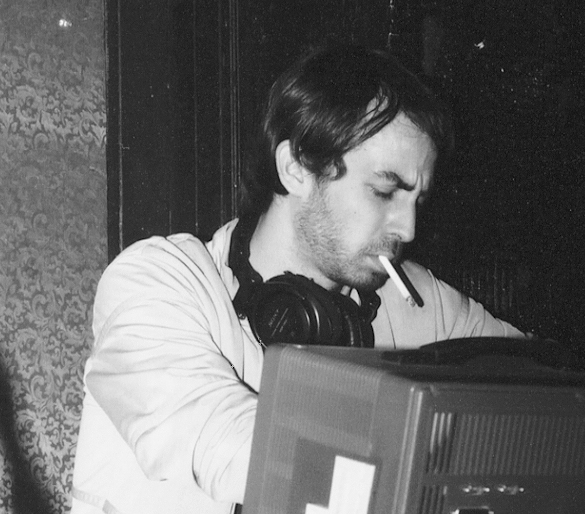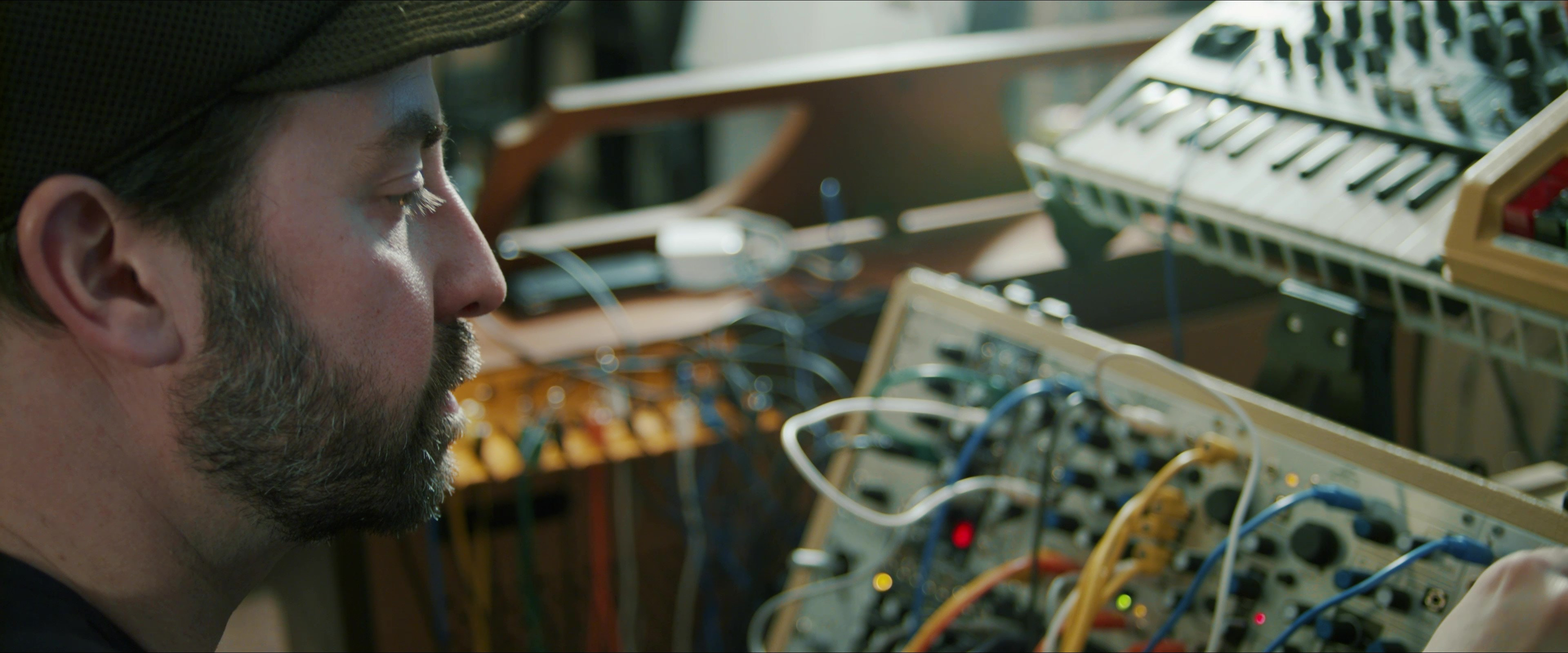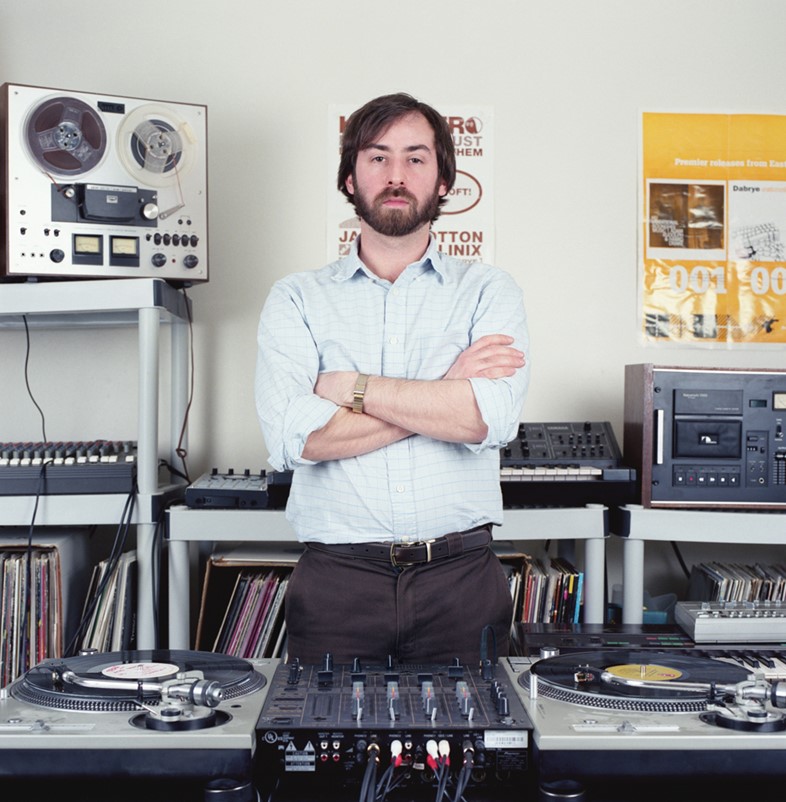
Just a Tadd
A look behind the many masks of Tadd Mullinix.
For centuries the pseudonym has been a crucial mask in the worlds of crime, commerce and art. Dummy corporations, shell companies, pen names and nom de guerres have been used throughout history to suppress the identity of individuals or corporations for a host of reasons, both legitimate and nefarious. For electronic musicians, the norm de disque has been known on the whole to serve both functional and artistic purposes, as well as disguising some criminal activities as well.
For Tadd Mullinix, user of countless pseudonyms, the creation of aliases is done primarily to segregate his far-reaching musical output into coherent artistic narratives. In a Red Bull interview in 2006 Mullinix expanded further on this desire to separate:
“I want to know what I’m buying, basically. In the end, it’s my music and I like it, but when it comes to other people I like to respect the diversity in what people like to specialise in and what they are collecting. It’s also good for presentation, I think. Creating aliases is a good way for me to categorise it myself and create, like, Dabrye has his own world, and I would fetishise bands and records… Like, when I was going through bands and records in my mom’s record collection, I remember just listening to a Talking Heads record and just staring at the art work and getting absorbed in that world”
“Behind many masks and many characters, each performer tends to wear a single look, a naked unsocialized look, and when the normal course of events is disrupted, people may get an image of the man behind the mask.”

Following an early life in metro area Detroit and briefly in Miami, Mullinix settled back in Michigan in the college town of Ann Arbor. Teenage years were spent in shoegaze-influenced bands before happening upon an Aphex Twin CD. Attendance at local raves swivelled his head even further away from bands and rock music toward the solipsistic enterprise of electronic music. Through this burgeoning interest in rave culture Mullinix got to know Ann Arbor based musician Todd Osborn in the early 90s and soon was given a job by Osborn at his Dubplate Pressure record store.
By this time Mullinix had moved from passive consumption of electronic music to active production and based on his instrumental dexterity from his previous years in bands, as well as being a classically trained cellist, the learning curve was not particularly steep. Starting on tracker software and then graduating to hardware experiments Mullinix released his first record as a joint venture with store owner Todd Osbourne under the name ‘Soundmurderer and SK-1’ on Osborn’s famed Rewind Records. The a-side, Dreader than Dread is a bolshy slice of fully loaded ragga jungle that shelled down intricately sliced amen’s and brash interjections culled from samples of Honey Boy Martin, Eminem and Public Enemy.
Mullinix continued to collaborate with Osborn and fired out a string of powerful jungle mash downs that impressed so much that in an act of appreciation, and serendipity for early Aphex fan Mullinix, Richard D James’s Rephlex label issued a compilation album of all previously released Soundmurderer and SK-1 12s in the mid 00s. However, since his first release Mullinix’s artistic eye had been restless, fuelled by a well-developed and hugely omnivorous hunger for music; not content to release just misty-eyed jungle Mullinix had a healthy reserve of music made in different styles, made on mostly tracker software, and when Ghostly International’s owner Sam Valenti IV visited Dubplate Pressure Mullinix furnished him with a CD of music from his car that peaked Valenti’s interest, here’s Mullniix’s account….
“I had all this music in my car just to reflect on and see if I wanted to make any changes. And when Sam came into the store and asked if I had anything, I just went to my car and gave him the cassette and said, “There’s other stuff on there but I think the house tracks are the first two or the first three or something.” I guess, he listened to the whole thing and he came back with some big ideas.”
Mullinix became a key early Ghostly artist with a plethora of releases under his own name as well as James T Cotton and Charles Manier. Arguably it is this early label relationship that gave Mullinix the confidence to create and release with complete freedom. Aside from previously profiled Legowelt, Mullinix has proved himself as one of electronic music’s most hyperactively profligate producers as well as one it’s most versatile artists. In a career stretching over 20 years he has gone from rugged jungle sound murderation into brain dancing IDM under his own name, prototypical experimental beatscapes as Dabrye, machine jam house and techno exploits as James T Cotton latterly simply JTC, full throttle body music as Charles Manier and recent breakbeat science under the moniker X-Altera. He has also busied himself with fertile and long-lasting collaborative projects with Todd Osborn, Melvin “Traxx” Oliphant and D’Marc Cantu, more of which later.

Here I’m taking a look at six tracks from the Mullinix back catalogue hidden behind five of Mullinix’s masks. Whatever deep and murky unsocialised impulses lay behind these masks is not the subject of this article, it’s all about the music. Game on….
Dabrye - Game Over feat Jay Dee & Phat Kat
Often the simpler and starker the sound source the more impact it has against a backdrop of silence. Think of the stray fart in church or the sustained single piano note in a horror movie soundtrack. By extension I’ve often felt that producers who choose a simple uncomplicated pallet of sounds obtain a more impressive result whereas those who saturate that sonic field can often fall too easily into overstatement. Yes, Spector’s “wall of sound” is impressive and Public Enemy’s “wall of noise” is equally impressive but I’m more a sucker for the stripped back drum and bass reductionism of dub music, the stark power of synth and drum machine combos a la Suicide and the simple beauty of a recorded grand piano marshalled on to a tape loop.
Dabrye’s Game over is a prime example of someone harnessing a simple but effective pallet of sounds to devastating effect. The ingredients list is short. It contains a few perfectly programmed elements that create a tense yet mesmerising backdrop for MCs Jay Dee and Phat Kat to rhyme on. In an interview with Slices Mullinix commented on the fact that a fascination with sci-fi soundscapes is in-built within people of his age via the likes of Star Wars, Dune and Blade Runner. It’s unsurprising that the synth tones in Game Over are redolent of Logan’s Run or Clockwork Orange, in equal parts bright, strident and sinister.
The genesis of Game Over began with Mullinix exchanging some beat tapes with the late great J Dilla who had contemplated using some of the beats on his forthcoming album but decided not to and instead offered his vocal performance for Mullinix to use on his own artist album as Dabrye. Both Dilla and Phat Kat provide steady raps, they both slide and glide over the beat with ease but it’s really the quality of Mullinix‘s programming that make this track a real standout
Many credit this track as helping provide formative influential groundwork for the LA beat scene of producers (Fly Lo, Kutmah, Gaslamp Killer et al) that rose to prominence in the mid noughties. Alongside Dilla, Madlib and Prefuse 73, who could be considered the Mount Rushmore of the LA beat scene, Dabrye’s first artist album One/Three has been cited by many of the LA beat producers as being an inspiration on their work as it showed how to bridge between experimental electronics and hip-hop in a way that was highly idiosyncratic but provided enough conceptual tinder to light fires in the imaginations of a next generation of producers.
JTC – King of the Box
There was a time in the late noughties when Chicago house revivalism started to gain some serious traction, to the point where it felt very quickly like we were heading towards saturation point. Producers like Legowelt, Jamal Moss and Orgue Electronique had all been pedalling live hardware jams for a good chunk of the noughties before the bandwagon had started rolling, but then it seemed in about 2009 that almost all new producers were making something with a taint of simple naive Chicago charm to it. Soft synths were jettisoned in favour of Roland drum machines and synths, and a glut of retro-leaning material started to flood the market. The results were mixed and certainly in my mind I felt a touch of disdain towards the unchecked pillaging of the Chicago house store cupboard.
Mullinix‘s contributions to this pool of love letters to the early Chicago house producers have been some of the most solid and effective, and his efforts sit in the camp of early adopters listed above rather than the johnny-come-lately brigade who will remain nameless.
The best example of his work can be found on the 2006 King of the Box EP which was issued on the Dutch Crème Organization label. The title track of the EP is a crazed disco loop driven house cut that teases out a frantic wah-wah loop over 6 minutes of tension build with no release. One suspects that in the hands of the right jock this could be deployed as an excellent ramping tool but listened to it in its entirety creates an entirely different perspective. This is part Ron Hardy homage and part musique concrete with a loop taken to the extremes of repetition.
X2 - Time Elevation Rhythm
Mullinix has proved himself an arch collaborator following early collaborations with Osbourne producing rabid ragga-jungle mash ups under the Soundmurderer and SK-1 partnership. Mullinix has gone on to have productive long-standing creative partnerships with U.S.-based electronic musicians who share his musical appetites. Mullinix’s most dynamic and richly faceted collaborative arrangement is a triangulation between Mullinix, D’Marc Cantu and Melvin ‘Traxx’ Olliphant. The projects orbit between either Mullinix in partnership with either Cantu or Traxx or in some instances all three jump in to collaborate.
X2 is a project that has frequently had input from all three members and this track boasts production credits from all three of them so seems like the best to review. Despite this track coming from three different minds it succeeds in being a sleek and cohesive edifice, embracing the soul of vintage acid house but constructing a more robust rhythmic exoskeleton characteristic of the fearsome yet fluid jakbeat sound that Cantu and Traxx have become known for.
Thick sheets of white noise vent out over a bed of industrial clangs and kinetic pockets of programmed handclaps that encircle a relentless house groove punctuated with a funky juno bump right out of the Mr fingers playbook. As the track progresses an acidic snarl starts to engulf the listener whilst a disembodied voice issues occasional dancefloor dictums. At nearly 10 minutes in length this is an exercise in sustained enjoyment/punishment, I personally would probably have to go for a tactical piss after jacking my corpulent husk to the fine piece of acid house thuggery.
Soundmurderer and SK-1 – Soundboy
I have a huge penchant for the Sleng Teng riddim and this alone is really the only reason for me choosing this track over others from the Soundmurderer and SK-1 back catalogue. Issued in 2003 on a 12” alongside Telembodanustyle as Rewind 006 Soundboy replays the Sleng Teng bassline in amongst all sorts of jungle ruffneck bounty. In all honesty, I could have chosen anything from the back catalogue and comfortably talked about its virtues.
Soundboy sees Mullinix and Osborne ditch the Amen break momentarily in favour of chopping up the Think break with formidable deftness, the soul breakbeat twisted into new configurations with absolute precision. At times smooth and rolling and at others a full scale percussive armageddon the rhythmic thrust of the track has all of the head fizzing dynamics of classic jungle records; the skittering machine gun micro edits on the snare creating those grin-inducing pitch-shifted drum fills which are an absolute joy to listen to.
Over their artful display of breakbeat science they deploy a whole host of classic jungle production tricks with all manner of drop-outs and cut-ins constantly disturbing the tracks sense of flow. Discombobulated grainy ragga chat, dub sirens and blasts of the aforementioned sleng teng bassline disrupt the barrage of breaks creating the stop/start undercurrents of classic jungle that create an insatiable energy worthy of a double gun finger salute.
Charles Manier – Sifting Through Art Collecting People
Charles Manier may sound like the name of a well-fed vineyard owner in a leafy province of France but it is in fact the name for the mask that Mullinix dons when he wishes to seek communion with an elemental sort of electronic music pitched somewhere between the intense EBM of Front 242 and the more elegant synth based post-industrial power jams of Chris & Cosey. This track is taken from the 2015 album American Manier and was given the nod of approval when Stuart Baker’s Soul Jazz records picked up the track for the 2021 post-punk dance compilation “Two Synths, A Guitar (And) A Drum Machine”.
The track is a superb example of Mullinix’s ability to extract the musical DNA from his chosen pool of influences and then graft it into his own productions. The beating heart of this track is a relentless drum machine, a perfectly programmed bass throb and an arpeggiated synth line over which is laid shards of mangled guitar feedback and angular synth lines that shift restlessly to match Mullinix’s heavily treated vocals issuing non-sequitur lines riffing on dead culture.
You could be forgiven for thinking that MM Studio is one of those studio credits that you are likely to see on 80s boogie records where the recording engineer is always called Butch. Instead, here the name is given to Mullinix’s studio project with accomplice Daniel Meteo. The ‘Good Star Dubs’ album comprises music that was originally put together during an intense recording session across a week in 2007 but only saw the light of day in 2016 when the duo thought the time was right.
Mullinix approached Meteo offered up the idea of developing a set of skeletal rhythm tracks he had made in the style of the early digital age of Jamaican producers during the mid-80’s (starting unsurprisingly with Prince Jammy’s Sleng Teng). Following one very intense week of studio labour later, Mullinix and Meteo mixed down about 15 tracks that combined Mullinix’s original riddims with further embellishments including recordings of guitars, organs and keys which were then treated with standard implements of dub reduction/expansion courtesy of the vintage outboard equipment in the Berlin studio.
Not since his ragga jungle days his Mullinix had a project that so explicitly draws from Jamaican music, but the sonic strategies of dub have always seemed to be close to the surface within most of his productions. Here the classic tropes of dub reggae are transplanted from the ghetto storms of 70s Kingston into the calmer environ of 2000s Berlin.

Pseudonyms certainly don’t make a boring artist more interesting and it does not mask inferior work but in the hands of someone as diverse as Mullinix they help the listener gain a sense of the territory he is working in. The diversity of his output is so impressive to the point of being a challenge to digest, and so it feels like a necessary step for Mullinix to mask up and allow us the listener to find their way through the tangled forests of his musical world.

